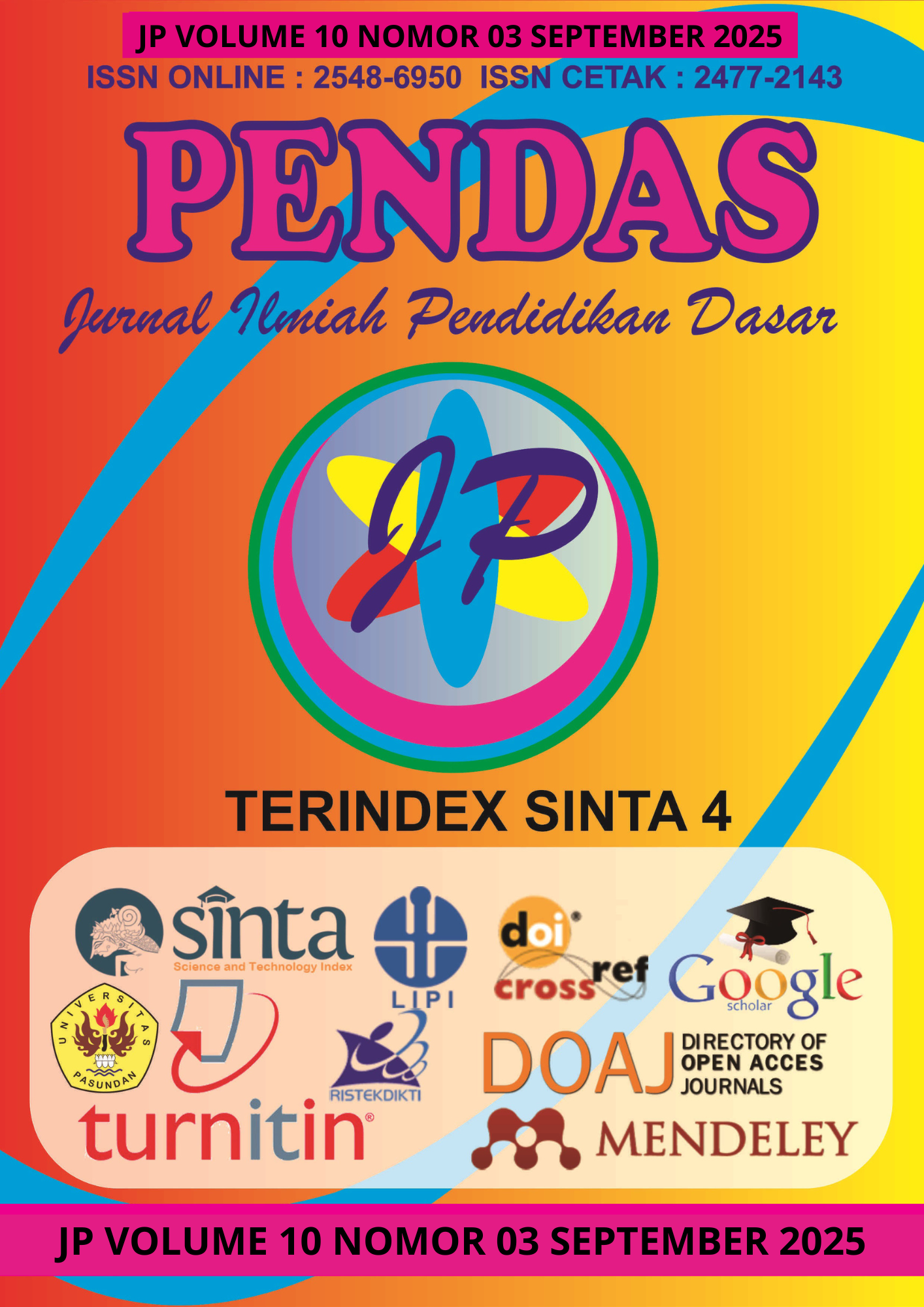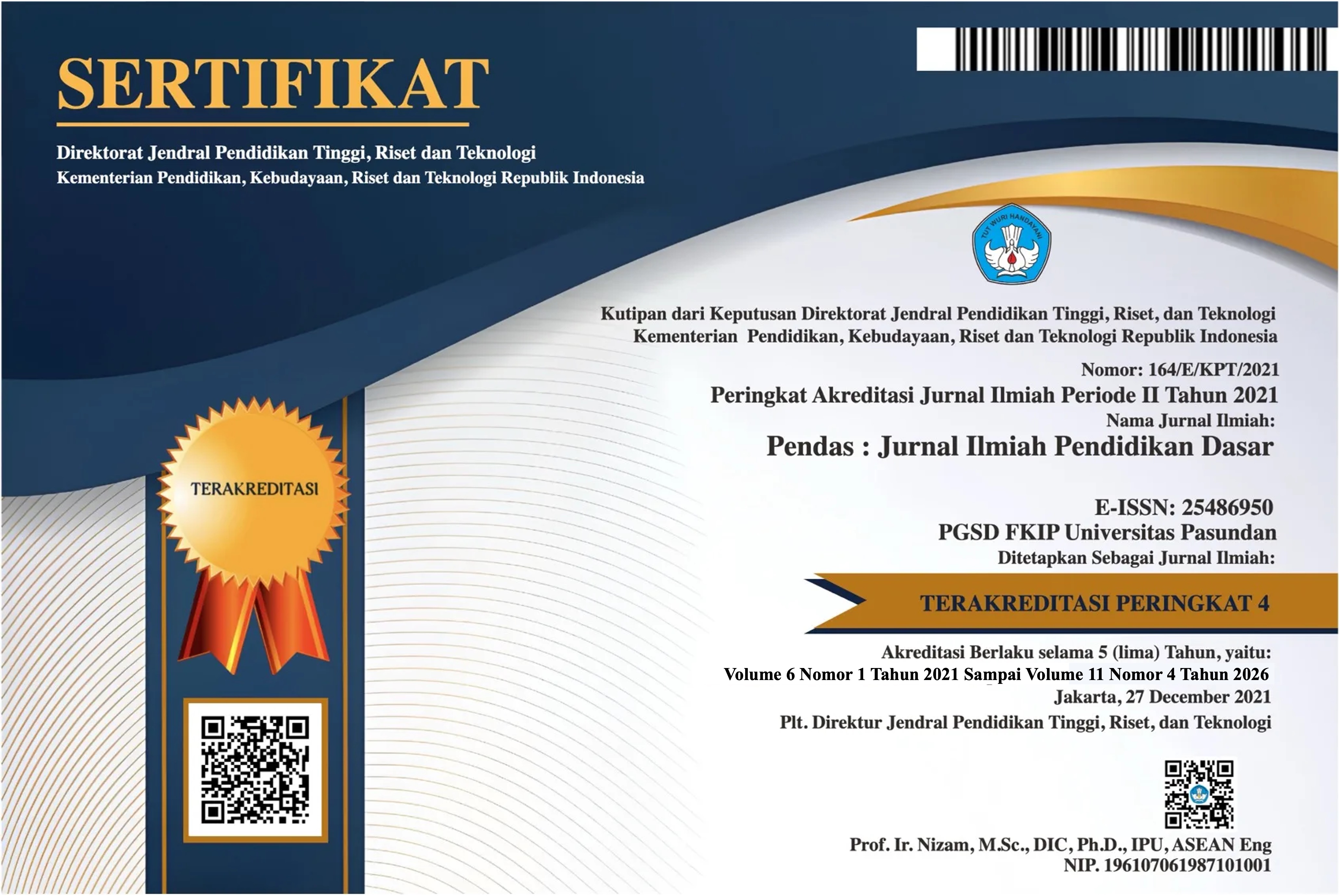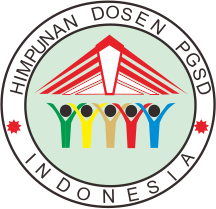UPAYA PENINGKATAN HASIL BELAJAR PENDIDIKAN PANCASILA MELALUI MODEL ACTIVE LEARNING TIPE ROLE REVERSAL QUESTION PADA SISWA KELAS VIII A SMPN 21 MATARAM
DOI:
https://doi.org/10.23969/jp.v10i03.32059Keywords:
Learning Outcomes, Civic Education, Active Learning Model of the Role Reversal QuestionAbstract
This study aims to describe the improvement in civic education learning outcomes
through the implementation of Active Learning model of the Role Reversal
Question type among Class VIII A students at SMPN 21 Mataram. The research
employed a classroom action research design. The subjects of the study were 32
students of Class VIII A. Data collection methods included test, observation, and
documentation. The instruments used were tests and observation sheets. Data
were analyzed using both quantitative and qualitative descriptive techniques. The
success indicator of the action was set at ≥75% of students achieving a minimum
score of 75. The results showed an improvement in Civic Education learning
outcomes after applying the Active Learning model of the Role Reversal Question
type in both Cycle I and Cycle II. In Cycle I, 37.5% of students scored ≥75, which
increased by 56.25% to 93.75% in Cycle II. The average student score also
increased from 72.53 in Cycle I to 82.62 in Cycle II, reflecting an improvement of
10.09 points. These findings indicate that the Role Reversal Question type of
Active Learning is effective in enhancing students Civic Education learning
outcomes.
Downloads
References
Abdullah, A., & Fahmi, Z. (2022).
Peran Guru Sebagai Motivator
Dan Pengaruhnya Terhadap
Hasil Belajar Siswa. Jurnal Al-
Fikrah, 11(1), 29-44.
Ahyar, D. B., Prihastari, E. B.,
Setyaningsih, R., Rispatiningsih,
D. M., Zanthy, L. S., Fauzi, M., &
Kurniasari, E. (2021). Model-
Model Pembelajaran. Pradina
Pustaka.
Ari Samandhi. (2019). Pembelajaran
Aktif (Active learning). Jakarta:
Teaching Improvement Worshop
Enginering Education
Develompment Project
Herianto, E., & Rispawati, R. (2019).
Meningkatkan Profesionalisme
Guru Madrasah Melalui
Pelatihan Penulisan Karya Tulis
Ilmiah. Jurnal Pendidikan Dan
Pengabdian Masyarakat, 2(1).
Ismail, M., Zubair, M., Herianto, E.,
Alqadri, B., & Author, C. (2019).
Pelatihan Pengembangan
Metode Pembelajaran Inovatif
Pada Guru-Guru Ma/M.Ts
Pondok Pesantren Al Raisyiah
Sekarbela Mataram. In
Prosiding Seminar Nasional
FKIP Universitas Mataram (Vol.
262).
Kurniawansyah, E., Fauzan, A., &
Mustari, M. (2023). Peran Guru
PPKn dalam Meningkatkan
Motivasi Belajar Siswa di SMA
Muhammadiyah Sumbawa.Jurnal Ilmiah Profesi
Pendidikan, 8(2), 1175–1179.
Pristiwanti, D., Badariah, B., Hidayat,
S., & Dewi, R. S. (2022).
Pengertian Pendidikan. Jurnal
Pendidikan Dan Konseling
(JPDK), 4(6), 7911–7915.
Silberman, Mel. (2007). Active
Learning: 101 Strategi
Pembelajaran Aktif.
Penerjemah: Sarjuli.
Yogyakarta: Insan Madani
Sumardi, L., & Herianto, E. (2024).
Motivasi Belajar Siswa SMPN
21 Mataram Dalam Mengikuti
Pembelajaran PPKn. Pendas:
Jurnal Ilmiah Pendidikan Dasar,
9(1), 3001-3017.
Suharsimi, A. (2007). Penelitian
Tindakan Kelas. Jakarta: Bumi
Aksara.
Sudrajat, Y. (2020). Implementasi
Pembelajaran Aktif (Active
Learning) Untuk Meningkatkan
Kompetensi Spiritual Dan Sosial
Siswa dalam Pembelajaran
Pendidikan Pancasila. Academy
of Education Journal, 11(2),
142-167.
Usmadi, U. (2021). Penerapan Model
Pembelajaran Active Learning
Tipe Learning Starts With
Question (LSQ) dalam
Pembelajaran Matematika.
[Skripsi]. Universitas
Muhammadiyah Sumatera
Barat.
Yuliatin, Y., Zubair, M., & Alqadri, B.
(2022). Lesson Study
Penerapan Model Pembelajaran
Kooperatif Pada Mata Pelajaran
Ppkn Di Man 2 Model Mataram.
Jurnal Pendidikan Sosial
Keberagaman, 9(1), 17–25
Downloads
Published
Issue
Section
License
Copyright (c) 2025 Pendas : Jurnal Ilmiah Pendidikan Dasar

This work is licensed under a Creative Commons Attribution 4.0 International License.



















